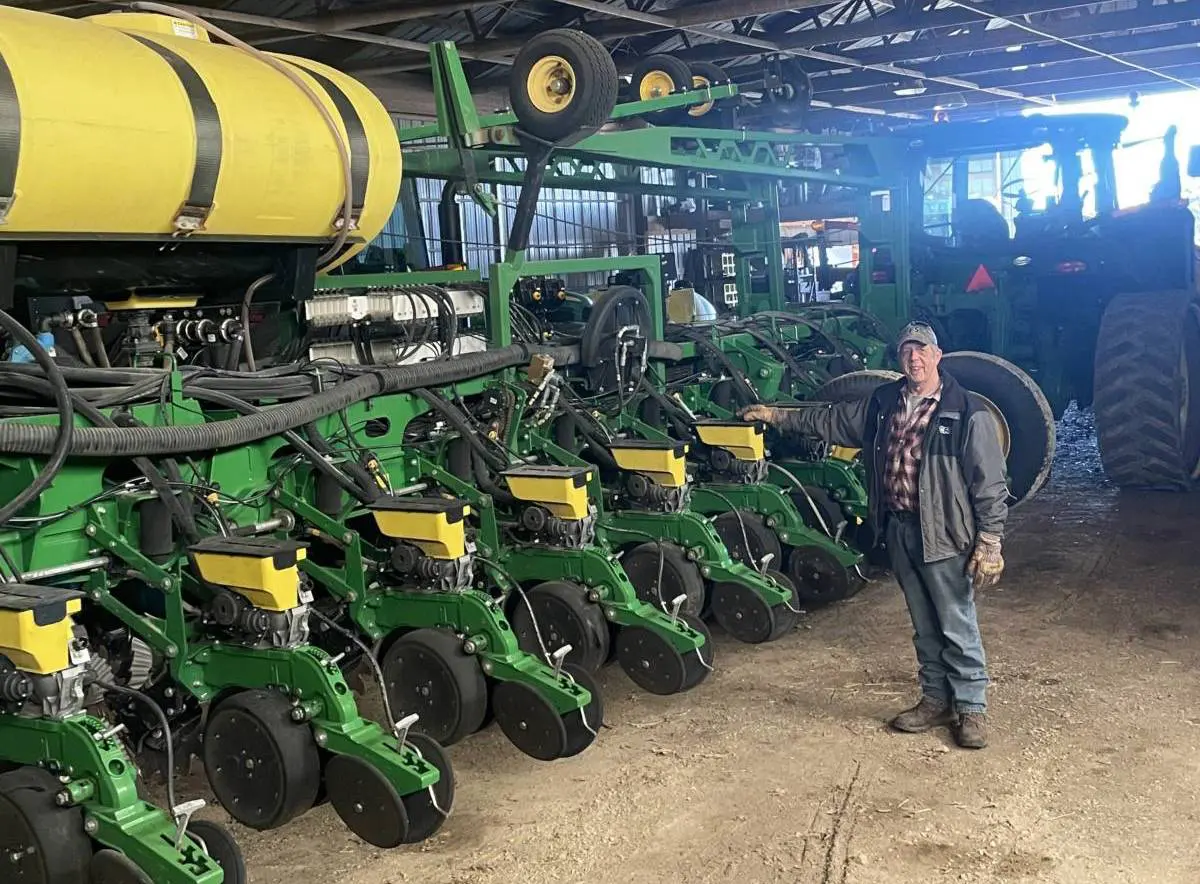 Late March and early April have brought rains to our area of Minnesota, in the upper U.S. Midwest. We’ve been in mild drought, but by mid-April, our soil moisture should be replenished so that we are out of drought conditions.
Late March and early April have brought rains to our area of Minnesota, in the upper U.S. Midwest. We’ve been in mild drought, but by mid-April, our soil moisture should be replenished so that we are out of drought conditions.
While we wait for temperatures to warm up and fields to dry out, we have been getting ready for planting. We have gone through both of our 24-row planters to make sure they are working well. We’ve updated software in those tractors to gather and track data while we plant. They are hooked up to tractors and ready to go.
We’ve also preloaded data for specific fields into the computers for planting. We applied our fertility program last fall, setting our planting plans for this year. They haven’t changed, with the exception of a few minor tweaks last month.
We also treated all of our soybean seed with a seed treatment fungicide, which will protect the seed from soil diseases as it germinates and emerges.
We hope to start planting in late April. When the weather allows, we will begin planting corn and soybeans the same day. The data has shown that planting soybeans early improves yield. The first crops planted will be our GM soybeans and corn.
We even out many of our fields just before planting with vertical tillage. This tillage just disturbs the top 5 cm, or 2 inches, of the soil, while leaving the soybean or corn stubble from last year’s crop in place. This helps the soil warm up and evens the seedbed for better planting conditions. Attachments on our planters move that residue trash out of the way.
Some of our fields have a cereal rye cover crop. These fields were corn last year, and they will be planted to soybeans this year. The fields are planted later because we plant soybeans directly into the cover crop without tillage. Planting later gives the soil more time to warm up. This year, we plan to terminate the cover crop after planting.
We also wait until mid-planting, when the soil is warmer, to plant food-grade soybeans. That seed is harder to get, so we want to plant it in close to ideal conditions.
When planting our food-grade seed, plant segregation is very important. We extensively clean the planter and all its parts to prevent contamination with other soybean varieties. This year, we plan to plant two different varieties of food-grade soybeans.
We can plant all our fields in about 14 to 17 days that we can be in the field. Spring weather rarely allows us to plant continuously. When the weather is good, we have enough help to keep at least one of our planters running 24 hours a day if needed.
Because it is still cool and wet in our area, we are anticipating a slight delay in the normal start time of the planting season.

